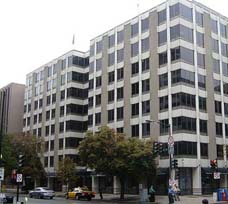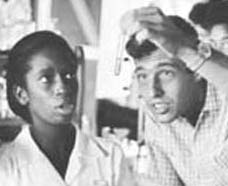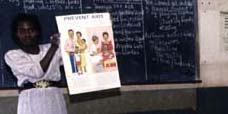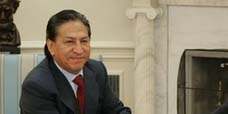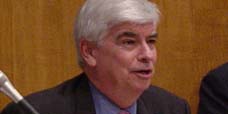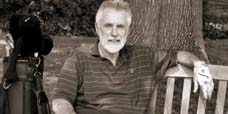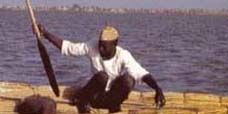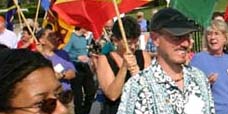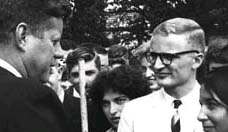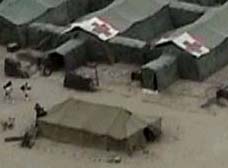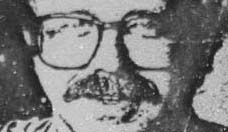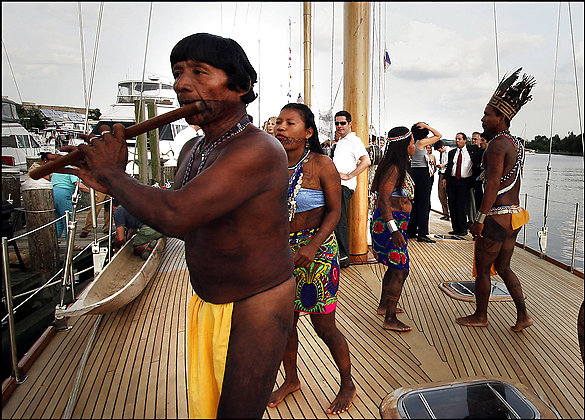
Brunton said his immediate goal is to convince organizations like USAID, the Peace Corps and the United Nations to provide money to help open local markets. A satellite communications system to provide Panamanian tribes with Internet capability, and thus the ability to sell products globally, is first on the list, he said.
Panama RPCV James A. Brunton Jr. says the Embera are a proud and healthy people, but said they live in remote villages with little contact with the outside world
A message of hope for all indigenous people
By edit@ctpost.com (BILL CUMMINGS bcummings@ctpost.com)
The Connecticut Post
"It's probably the most amazing boat we have ever had here."
Jan Williams, owner of Captain's Cove, of the Panamanian-made Pajaro Jai
Caption: Embera Indians dance onboard the Pajaro Jai in traditional garb, although at home they are more likely to be found wearing shorts and shirts. Embera Indians dance onboard the Pajaro Jai in traditional garb, although at home they are more likely to be found wearing shorts and shirts. Photo: Robert A. Reeder -- The Washington Post
On the outside, it's a beauty: a sleek, 92-foot wooden sailboat with a green hull that sits just above the lapping waters of Long Island Sound.
Inside, it's even more impressive: tropical woods carved and fashioned into benches, couches, beds, floors, ceilings and even dressers.
But what's truly remarkable about the Pajaro Jai, docked at Captain's Cove Seaport in Bridgeport, is that every inch of it was hand-built by Embera Indians living in a remote Panamanian jungle village.
"It came straight out of the jungle. It's probably the most amazing boat we have ever had here," said Jan Williams, who, along with her father, Kaye, owns Captain's Cove. The Pajaro Jai is in Bridgeport on its maiden voyage and first leg of a goodwill tour aimed at bringing attention to the underutilized skills of Central American tribes.
"She was built over a 12-year period," said Jim Brunton, a Westport millionaire who helped build and pay for the yacht. Brunton founded the Pajaro Jai Foundation to foster healthy economic development in rainforest countries.
Today, Brunton and representatives of the Embera will hold a news conference at 4 p.m. at Captain's Cove to show off the boat and explain their mission. The event will feature Embera in traditional costumes and performing tribal dances. "These Indians want to be self-sufficient. They have these amazing skills, and we are trying to find ways to use them," Brunton said.
Maria Masquiza, who works with the United Nations Permanent Forum on Indigenous Issues, said Brunton's effort is admirable. She said the U.N. is pushing to establish a declaration of human rights to govern how countries deal with indigenous peoples.
"I think it's a good approach. It's important that people from these communities become self-sufficient," Masquiza said.
But she warned that those wishing to help tribes should be careful not to impose their version of progress on them.
"I'm an indigenous person from Ecuador. The problem is many of these tribes are self-sufficient now. We from the outside think differently," Masquiza said.
The U.N. is in the process of obtaining member agreement for a human rights declaration that would establish rights for indigenous peoples, many of whom have been stampeded by modern development and industry.
"It's about prior consent and asking what they need. You may say, 'These people are poor because they don't wear shoes.' But they may not wear shoes because they believe there is better contact with mother Earth," Masquiza said.
The U.N. estimates there are 5,000 different languages and cultures within indigenous communities scattered across the globe. Masquiza said many tribes have been displaced by large-scale development and pushed into cities they don't understand.
"Years of marginalization and forced assimilation has resulted in the risk of cultures dying out," according to an issue paper published by the U.N.
For Burton, that's exactly the point. He wants to find ways for indigenous populations like the Embera to use their traditional skills to make money and better their lives while remaining in their villages and maintaining their culture.
The Pajaro Jai's crew consists of 16 people, nine of whom are Embera Indians from the Darien jungle of Panama. All helped build the boat.
Also on board are seven members of Brunton's organization. The yacht is worth about $5 million. Brunton said the Embera are a proud and healthy people, but said they live in remote villages with little contact with the outside world.
Conversing mostly in Spanish, most are covered with elaborate tattoos that have significance within their community.
"This is about generating a future for themselves. These are people who had never seen a city until we brought them to Panama City. They are quite primitive, but still very proud people," Brunton said.
Brunton said his immediate goal is to convince organizations like USAID, the Peace Corps and the United Nations to provide money to help open local markets. A satellite communications system to provide Panamanian tribes with Internet capability, and thus the ability to sell products globally, is first on the list, he said.
A furniture factory, employing Embera woodworking skills, is being set up in the jungle region where the yacht was built.
To begin the 2,000-mile journey to Washington, D.C., the yacht and its crew first sailed into Panama City. In a week or so, Brunton plans to proceed to the Maine coast and sail north up the Penobscot River, nearly to Bangor.
The group is scheduled to meet with members of Maine's Penobscot Indian tribe, the first in the nation to receive a settlement over disputed tribal lands.
The purpose is to network with other indigenous peoples and spread their message, Brunton said.
The trip to Washington and Bridgeport went well, and the boat managed 12.5 knots while fighting wind, Brunton said. "I think we can do 14 knots with the wind."
The ship encountered the end of a hurricane, and the Embera crewmembers spent the first few days of the 12-day trip battling seasickness.
"They had never sailed before. It took real courage to get on the boat," Brunton said.
To build the boat, the Embera, working with American helpers and boat builders, employed centuries-old carving and woodworking techniques to fashion not only furniture and floors, but the entire boat from the keel to the 108-foot main mast.
Ironwood trees with just the right curvature to form the boat's ribs were found in the Panamanian jungle and dragged to a riverside construction site. The trees are so rigid they cannot be bent.
Lead for the keel was melted over open fires and poured into molds.
Lacking a crane to raise the mast, the Embera and their helpers built one. Even the steel turnbuckles that anchor and adjust rigging were fabricated and polished by hand.
"The material to build the boat was dragged by horse and shoulders out of the jungle. We used iron, pecan, rose and almond wood," Brunton said.
Brunton, who made his fortune in the software industry and is a former Peace Corps volunteer, believes the 170,000-pound yacht can showcase the Emberas' skills and abilities. It also provides a forum to work with groups that sponsor healthy development in rainforest countries, he said. Brunton showed off a large basket the Embera produce by weaving hard-to-see threads from trees in the region into watertight bowls. The colors are reminiscent of Southwestern themes.
"That took one year to weave," Brunton said, shaking his head at the talent and ability required.
"They get $300 to $500 when they sell them. The people who buy them sell them for $4,000," Brunton said.
"These people are talented, but there are no programs for them," said Vance Blushke, who works with Brunton's foundation.
"If they have the skills to do this, we believe we can bring the market to them," Brunton said.
Bill Cummings, who covers regional issues, can be reached at 330-6230.
